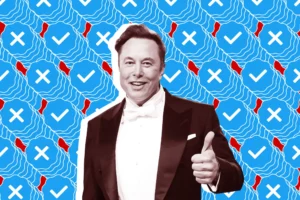Gas-guzzling, fast automobiles racing around a course is the essence of NASCAR racing. However, NASCAR debuted a brand-new vehicle on Saturday: an all-electric SUV with twice the horsepower of any of their current gas-guzzlers.
Even a sport more recognized for its devotion to history is enjoying the technology, which shows how far electric vehicles have progressed, even though the new car is still only a prototype.
It appears to be what one may anticipate from NASCAR in some respects. It has large, vibrant wheels and a wing on the back to assist it maintain control of the road when traveling at fast speeds.
However, the noisy V8 internal combustion engines that power the race cars are what NASCAR is most famous for. Executives at NASCAR maintain that they have no intention of moving away from fuel-burning machinery anytime soon.
“Our primary offering is the combustion engine, and we intend to keep it that way going forward,” stated Riley Nelson, the head of sustainability for NASCAR.
However, this fully functional prototype gives NASCAR a means to measure fan interest in electric vehicles.
With three electric motors driving the front and back wheels, the racing crossover can generate a maximum power of 1,300 horsepower, which is nearly twice as much as the current gasoline-powered race cars in NASCAR.
The whole notion of electric racing will undoubtedly be rejected by some ardent NASCAR supporters, according to senior vice president of racing development John Probst. Because of this, NASCAR wishes to be quite clear that race vehicles that run on gasoline will not go extinct anytime soon.
This is also a chance to be open-minded about potential interesting developments in the future. According to NASCAR’s own fan surveys, a lot of people are interested in learning more about electric cars and may view EV racing as a means of doing so, he said. Even the most ardent opponents of electric vehicles, he believes, will back down once they witness the thrill and speed of these vehicles, which can be faster and more powerful than gas vehicles.
The NASCAR EV prototype was constructed in collaboration with ABB, a business that builds infrastructure for electric vehicles, including charging power equipment. ABB is also a major player in Formula E, the Formula 1 electric racing competition.
This kind of racing involvement hopefully sparks interest in electric vehicles and demonstrates their potential, according to Michael Plaster, executive vice president of electrification at ABB in the US. The idea is to sell electric cars through thrilling track performances.
Last year, NASCAR unveiled a more comprehensive plan to cut all of its net carbon emissions to zero by 2035. According to Nelson, racing accounts for a very minor portion of the company’s total carbon emissions. For the time being, the majority of that endeavor focuses on cutting emissions from transportation, office space, and track operations at the 15 NASCAR-owned facilities.
We’re still in the early phases of this journey, but we know where we need to go based on the successful trial initiatives we’ve introduced into the operations of our core business and events.
In the coming years, NASCAR intends to introduce a more environmentally friendly racing fuel that can still be burnt in noisy V8 engines. Currently, NASCAR vehicles run on fuel that is 15% ethanol and 85% gasoline.
The National Association for Stock Car Auto Racing, or NASCAR, was founded with the intention of featuring automobiles that are comparable to those that are driven by Americans. Modern NASCAR race vehicles have changed significantly over the years, and they no longer resemble the Toyotas and Chevrolets that the average American owns. This time around, the designers aimed to preserve the similarity between the race car and the increasingly SUV-like cars that enthusiasts drive. According to Cox Automotive, traditional automobiles now account for fewer than 20% of US auto sales, as opposed to SUVs, trucks, or vans.
Probst stated, “We really have the chance to assess not just the battery electric part but also the crossover vehicle part.” Therefore, it’s possible that one or both of these will develop into anything for us in the future.



